People who attend the Mid-Summer Ghost Festival at Lujhou (
The reason for it is very simple, said Yang Lien-fu (
"There are so many good religious traditions that are on the verge of extinction," he said. "As the second generation of the temple's management, I feel obliged to carry forward old traditions and keep them alive as long as possible."
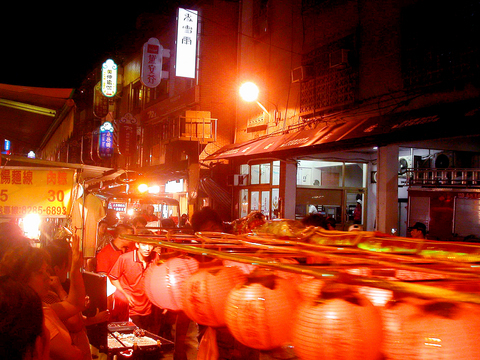
PHOTO COURTESY YONGLIAN TEMPLE
The temple took over the city's public sacrificial rites for the Mid-Summer Ghost Festival about four years ago. It now has one of the nation's most elaborate Ghost Festival religious ceremonies, after that of Keelung City.
Built in 1873, Yonglian Temple is the center for Buddhist worship in Lujhou. It has gone through various renovations and expansion projects over the years, with the latest renovation work being completed in 1997.
Festival roots
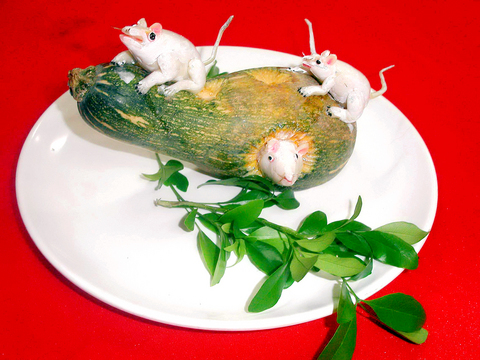
PHOTO COURTESY YONGLIAN TEMPLE
The festival, which makes offerings on the 15th day of the seventh lunar month, is a custom dating back thousands of years.
According to Buddhist beliefs, the festival originates from a story about Moginlin, a disciple of the Buddha Sakyamuni. He went to hell to rescue his mother, who was being punished for selfishness and failing to do good deeds when she was alive.
The Buddha told him that if he wished to relieve his mother from her suffering, he should offer five fruits and 100 delicacies to all ghosts on the 15th day of the seventh lunar month.
Taoists, meanwhile, believe that the festival is held to mark the birthday of the Guardian of Hell, who governs all matters in the underworld. He decreed an amnesty so all lost souls in hell could be released to return to the mortal world on the first day of the seventh lunar month. They enjoy incense, candles and food offered to them for one month so that they might be converted to "the Way."
In current practice, the Mid-Summer Ghost Festival begins on the first day of the seventh lunar month and is marked by the opening of the gates of the underworld. All the wandering, hungry and lonely ghosts in hell then return to the world of the living for one month.
On the 14th day, a parade is held and lanterns are released on waterways to light the way for abandoned souls and lead them to dry land.
A ceremonial dance is performed to welcome deity Chung Kwei (
Paste offerings
Nowadays, paste sacrificial figures are distributed to festival goers at the end of the day for home decoration. They are not edible -- although about 20 or 30 years ago they were. In earlier times, paste figures were also offered at house-warming parties or weddings.
According to Hung Shih-hsien (
For the modern version of these figures, food preservatives are added to the dough, which is made of flour, rice powder and water. After the figures are dried, they are painted and then varnished with a plastic coating to prevent them from cracking.
Finished figures made out of the dough can last for as long as a year, said Lee Chun-hsiung (
Paste figures mounted on perishable vegetables such as potatoes, pumpkins or bitter squash, though, last for between three and 10 days. Some figures, such as birds made out of papier-machet, can last for two to three years.
In addition to the paste figures and papier-machet, Lee can also make fish ice sculptures and carve turnip cranes for the event.
It takes Lee about a month to finish around 100 pieces of art for the festival. A blessing by monks then symbolically multiplies the 100 items so that they can feed the countless ghosts who will attend the festival.
Lee's catering business is deteriorating rapidly, however, and paste-sacrifice art is declining in popularity as Lujhou becomes urbanized. Lee said he is planning to venture into a more lucrative business, and will open eateries in Lujhou and Sanchong (
Dying art
During its peak, Lee said his catering business had more than 20 engagements a month, but the number has now dwindled to about 10.
Lee started learning the skills of the business from his father, a professional caterer for weddings, funerals, birthday parties and religious events, at the age of 25. He is 39 now.
His father's exquisite skills in making paste figures earned him an award of excellence at the 1996 Taipei Chinese Culinary Exhibition.
Now, the Lees number among the nation's few masters specializing in the art. The younger Lee says that he knows of one other person who has mastered the art -- a 60-year-old living in Sanchong.
Pig sacrifices
About 10km away from the Yonglian Temple, a different type of religious tradition is taking place. The Ghost Festival had attracted about a dozen pig farmers carrying truckloads of sacrificial pigs to the Tachong Temple in Pali (
The 210-year-old Tachong Temple has just been designated as having historically significant architecture, and temple managers hope to begin a renovation project by the end of next month to give the building a face-lift.
Chou Chin-tiao (周金條) won this year's pig-raising contest with an animal that weighed 890kg. The first runner-up came in far behind, at under 500kg, with the second runner-up weighing about 400kg.
This was the fifth time Chou won the contest. The secret of growing such a big pig, Chou said, lies in the fodder. The feed he uses contains grain shells, rice porridge, canned fish, pig oil, milk powder and raw oysters.
The animal is fed twice a day, with 14kg of fodder each meal, and is given water every three hours. The cost for the fodder alone is about NT$30,000 a month.
During the summer, he has seven fans blowing on the animal to keep it cool and comfortable.
During his some 30 years of pig farming, Chou said that only three pigs died under his care. Although he spends more time and effort taking care of the animals than his wife and four children, Chou said that it pays off when he wins the highest honor.
"I don't raise the pigs for the gold plate or certificate of merit," he said. "I do it to fulfill a promise I made to the Buddha when I was poor that I would offer big sacrifices if I could have food to eat and clothes to wear."
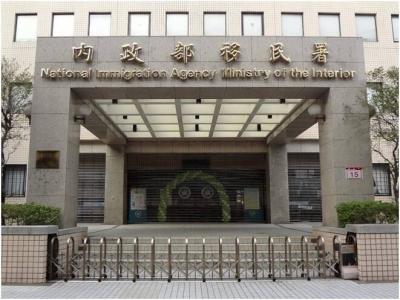
A small number of Taiwanese this year lost their citizenship rights after traveling in China and obtaining a one-time Chinese passport to cross the border into Russia, a source said today. The people signed up through Chinese travel agencies for tours of neighboring Russia with companies claiming they could obtain Russian visas and fast-track border clearance, the source said on condition of anonymity. The travelers were actually issued one-time-use Chinese passports, they said. Taiwanese are prohibited from holding a Chinese passport or household registration. If found to have a Chinese ID, they may lose their resident status under Article 9-1
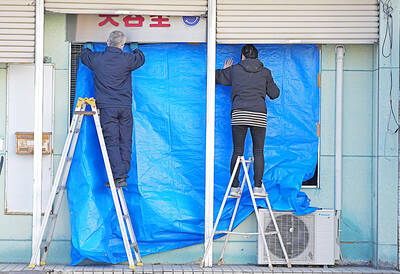
Taiwanese were praised for their composure after a video filmed by Taiwanese tourists capturing the moment a magnitude 7.5 earthquake struck Japan’s Aomori Prefecture went viral on social media. The video shows a hotel room shaking violently amid Monday’s quake, with objects falling to the ground. Two Taiwanese began filming with their mobile phones, while two others held the sides of a TV to prevent it from falling. When the shaking stopped, the pair calmly took down the TV and laid it flat on a tatami mat, the video shows. The video also captured the group talking about the safety of their companions bathing

PROBLEMATIC APP: Citing more than 1,000 fraud cases, the government is taking the app down for a year, but opposition voices are calling it censorship Chinese Nationalist Party (KMT) Chairwoman Cheng Li-wun (鄭麗文) yesterday decried a government plan to suspend access to Chinese social media platform Xiaohongshu (小紅書) for one year as censorship, while the Presidential Office backed the plan. The Ministry of the Interior on Thursday cited security risks and accusations that the Instagram-like app, known as Rednote in English, had figured in more than 1,700 fraud cases since last year. The company, which has about 3 million users in Taiwan, has not yet responded to requests for comment. “Many people online are already asking ‘How to climb over the firewall to access Xiaohongshu,’” Cheng posted on
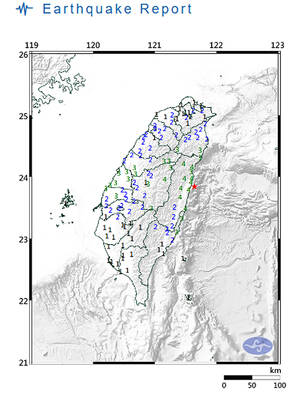
A magnitude 5.7 earthquake yesterday struck off the coast of Hualien, causing brief transportation disruptions in northern and eastern Taiwan, as authorities said that aftershocks of magnitude 5 or higher could occur over the next three days. The quake, which hit at 7:24pm at a depth of 24.5km, registered an intensity of 4 in Hualien and Nantou counties, the Central Weather Administration (CWA) said. There were no immediate reports of damage or injuries. In Taipei, the MRT railway’s operations control center received an earthquake alert and initiated standard safety procedures, briefly halting trains on the Bannan (blue) line for about a minute.